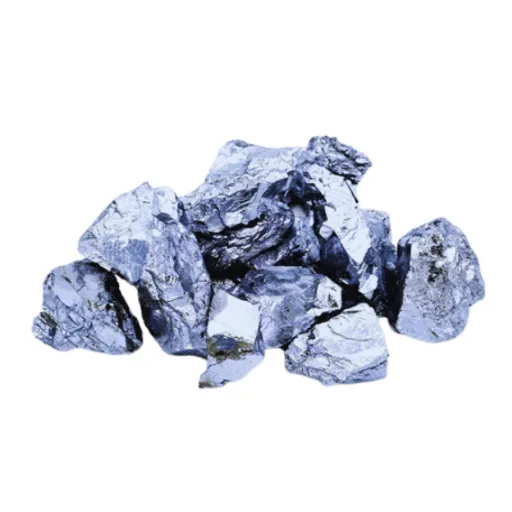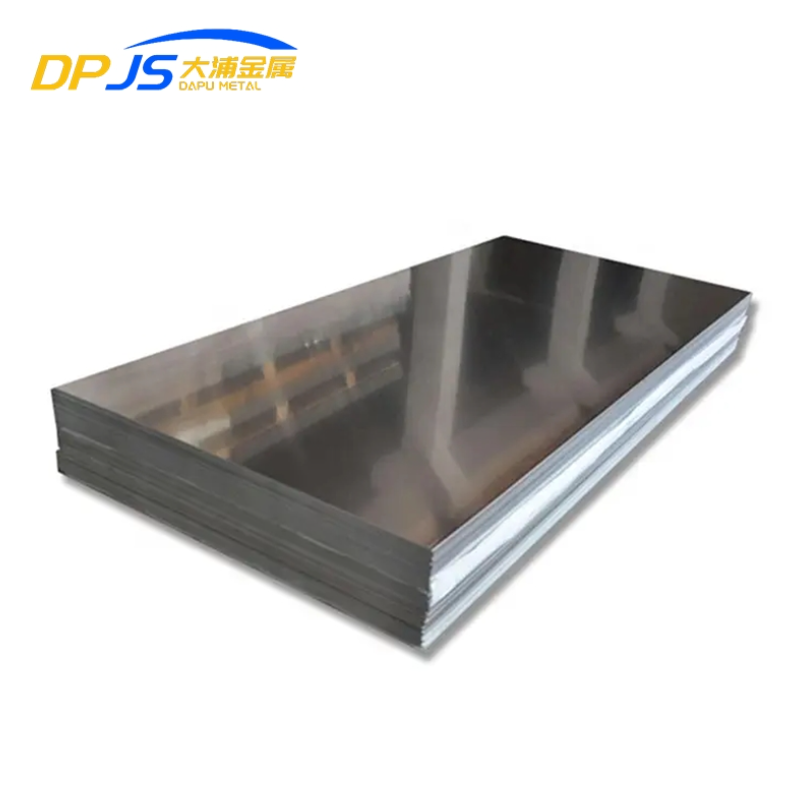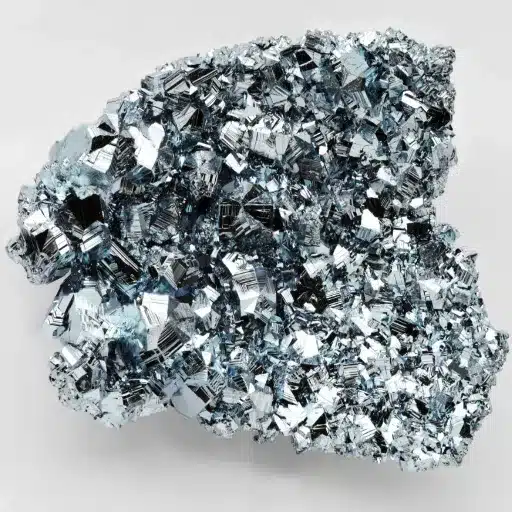In terms of strength, it is hard to compare any material on Earth with the incredible durability of metals. From ancient tools to the construction of skyscrapers and space odysseys, metals have sculpted not one, but many aspects around us. But have you ever sat down to ponder and wondered, what are considered to be the strongest metals? Here is a comprehensive exploration of the properties, uses, and common points of strength these metals share. Let us proceed now to rank the top 10 strongest metals on Earth, all possessing their idiosyncratic traits and standing tall as lords of science, industry, and innovation.
Understanding Metal Hardness
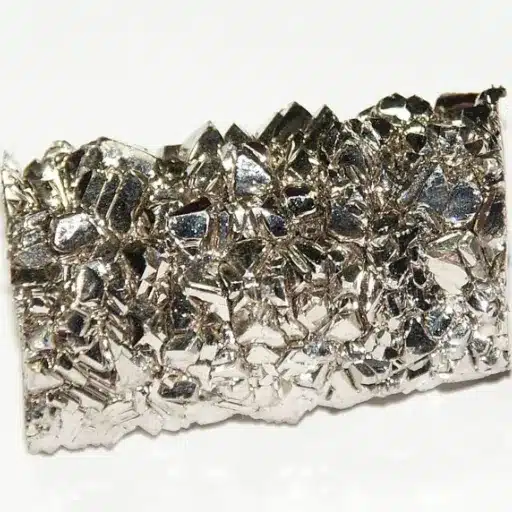
Definition of Metal Hardness
Metal hardness is a way to say if a material is resistant to deformation, scratching, or denting when a force is applied to it. Hardness may decide the way a metal could be used in practical applications where strength and durability are required. Hardness is measured by standard methods such as the Mohs scale, the Brinell test, or the Vickers test, which essentially referred to the resistance of the metal when pressure is put on it.
Historically, the need for metal hardness stems from applications. Large numbers of very hard materials are used in the construction of engineering and other goods where durability is required. Hard metals such as tungsten and titanium are employed in manufacturing cutting tools, heavy machinery, and aerospace parts since they can withstand strong stresses or abrasion. The softer precious metals—gold and silver—are easier to manipulate; thus, they are widely used in jewelry and fine designs.
With all this knowledge about metal hardness, industries can select the metals for a particular purpose. Metals having harder surfaces are less prone to abrasion and thus, the products made from such metals enjoy a longer working life. In engineering study areas, metals are measured and carefully studied for hardness so that new materials can be developed which are more strong and capable of fulfilling the requirements of modern technology and infrastructures.
Methods of Measuring Hardness
The hardness of a material is usually described as its resistance to deformation or indentation. Depending on the nature of the material and the application, one of several standard methods may normally be applied.
📊 Standard Hardness Testing Methods
Brinell Hardness Test (BHN):
A hard steel or tungsten carbide ball is pressed against the test material under a fixed load. The diameter of the impression left is then measured, and the hardness number is calculated accordingly. Brinell is mainly used for softer metals and materials with comparatively uneven structures.
Rockwell Hardness Test (HR):
It measures the depth of penetration under a fixed load. The Rockwell test is considered fast and simple and is more generally used for harder metals and alloys. Different Rockwell scales are chosen depending on the type of material and its approximate hardness.
Vickers Hardness Test (VHN):
It consists of using a diamond-shaped indenter under an attractive force. The dimensions of the imprint made by the indenter are measured using a microscope. This type of hardness test is most versatile and able to deal with extremely thin materials or coatings.
Each method has its particular advantages and suitable applications. Having an accurate hardness test will guarantee that materials will function properly when used for their intended purpose, from heavy construction materials to delicate electronic pieces.
Importance of Hardness in Applications
In materials science, hardness is of significance because it is the very attribute that governs how well a material will endure, actually perform, or be functional in an application. To elaborate, here are some areas where hardness significantly comes into play:
🏗️ Construction and Infrastructure
Steel welded into concrete structures is hard enough to bear heavy loads and withstand repetitive loading and harsh environments. Hardened steel is implanted in bridges, buildings, and railway tracks.
⚙️ Tool and Machine Construction
Components need to be hard enough to resist deformation and wear. Cutting tools made of tungsten carbide withstand wear very well, allowing for precision and long life in industrial machining processes.
💻 Electronics and Technology
Hard coatings like diamond-like carbon protect sensitive electronics from scratching. Semiconductor manufacturing calls for materials with high hardness to achieve stable and accurate performance.
✈️ Aerospace Supplier
Materials must be very hard and lightweight to counter extreme situations. Titanium alloys are used in aircraft frames and engines because of their superior strength-to-weight ratio and resistance toward deformation.
🚗 Automotive Components
Hardness is desirable for automotive parts that undergo continuous friction, such as gears and bearings. Hardened steel resists wear under heavy loads to prevent part failure and enhance vehicle performance.
The above applications clearly highlight that materials must be chosen according to their hardness levels; otherwise, reliability, efficiency, and life span could be compromised. By knowing the requirements of different industries, engineers and designers can rest assured that they are choosing materials that satisfy the standards.
Top 10 Strongest Metals in the World
Overview of the Strongest Metals
The world’s strongest metals are famous for their extraordinary combinations of properties, making them sought-after in different industries. These metals are often ranked according to their tensile strength, compressive strength, toughness, and hardness. Each of these factors determines how well the metal withstands assault by a certain force—thereby breaking, deforming, or failing. Below is an overview of some of the strongest metals in the world as well as their features:
-
1.
Tungsten
It has the highest tensile strength of any pure metals, the value being 1510 MPa. This metal resists extreme heat and wear and hence is used in high-temperature operations in aerospace and military-grade equipment.
-
2.
Chromium
Chromium is said to be extremely hard and corrosion-resistant. It is used in producing stainless steel, whereby it strengthens the alloy, protecting it from rusting and deterioration.
-
3.
Titanium
Famous for its strength and weight ratio, titanium is lighter yet stronger. With durability and biocompatibility, it stands as a paramount material for the aerospace industry, implants, and sporting goods.
-
4.
Steel (Alloy)
Though not a pure metal, steel is an alloy of iron and carbon, with other elements often added for strength. High-grade steels, like maraging steels, are extremely tough and employed in heavy structural and automotive applications.
-
5.
Osmium
Highly dense in nature, osmium is difficult to resist wear. Its density and hardness place it as specialized in electrical contacts and fountain pen point creations.
-
6.
Iridium
This rare metal holds high resistance against corrosion and heat at very high temperatures. It is used in conditions considered relatively harsh, such as spark plugs and laboratory equipment.
-
7.
Tantalum
Tantalum is distinguished by extreme corrosion resistance, particularly against boiling acids. It finds its way into electronics, especially capacitors, whereas surgical instruments are coveted for the biocompatibility of tantalum.
-
8.
Vanadium
With very high toughness and ductility, vanadium is usually added to steel alloys to increase strength. It finds uses in tools, pipelines, and jet engines.
-
9.
Rhenium
With a melting point above 3000°C, rhenium is the metal that resists the most heat. It finds application in jet engines and the highest temperature turbine blades.
-
10.
Cobalt
Some of the pertinent properties of cobalt include being highly strong and magnetic. Typically, it is present in superalloys used in gas turbine manufacture, aerospace applications, and prosthetics.
These metals demonstrate the remarkable variety and ability of materials used in modern engineering and technology to impart strength and performance in severely demanding environments. Knowledge of their peculiarities would enable industries to select the most ideal candidate for a given purpose.
Detailed Analysis of Each Metal
TITANIUM
Titanium is a lightweight and very strong metal with an incredible strength-to-weight ratio and high resistance to corrosion. This metal is most useful in the aerospace industry, where lightweight properties are considered for fuel-efficient designs of aircraft and spacecraft. Titanium is non-toxic and biocompatible, allowing it to be used in medical applications such as implants or prosthetics. Moreover, it is capable of withstanding very high temperatures, which is a requirement in jet engines and chemical processing plants. Although titanium is abundant in the Earth’s crust, titanium extraction and refining are energy-demanding, resulting in the metal’s relative price compared to others.
ALUMINUM
Aluminum is a metal that is used for so many things, celebrated for its lightness, corrosion resistance, fine thermal conductivity, and electrical conductivity. It is used in construction, transportation, and packaging industries. A metal unlike some others, aluminum can be recycled almost indefinitely without any loss in properties, making it an environmentally sustainable material. It goes into airplane structures, automobile bodies, and household products. Recent advances in aluminum alloys have made them stronger, and they are now taking over applications widely accepted to steel.
NICKEL
The unusual strength of nickel lies in its resistance to heat and its ability to mix with other metals. It is, in fact, crucial for making stainless steel, in which it offers resistance to corrosion. Nickel-based superalloys are used in high-temperature environments like gas turbines and jet engines. Moreover, they are used for battery fabrications, including rechargeable but also Ni-MH and lithium-ion batteries, which find applications in modern-day electric vehicles and renewable energy storage. Environmental concerns and ethical issues regarding nickel extraction have pushed higher consideration for sustainability options of nickel extraction and recycling.
COBALT
Cobalt is crucial for advanced technology and renewable energy sectors. Primarily, it is used in batteries, lithium-ion cells, in particular, where it helps with energy density and stability. While working with batteries, cobalt’s magnetic properties make it a boon to electronics, including in the manufacture of permanent magnets used in motors and generators. It is also an essential component of cooling superalloys for turbine blades and jet engines, where resistance to heat is required. Ethical and sustainable sourcing of cobalt has become a matter of great concern, for its supply is concentrated in regions with daunting working and environmental conditions.
By analyzing the peculiarities and uses of these metals, industries can come up with advanced technologies whilst tackling sustainability and resource efficiency issues.
Comparative Strengths and Uses
The strongest metals can be compared for their suitability for tensile strength and high melting point by tungsten, and for strength-to-weight ratio by titanium. Chromium is the hardest and corrosion-resistant of all. But steel is famed for its versatility and recyclability.
| Metal | Strength | Uses | Key Traits |
|---|---|---|---|
| Tungsten | Tensile: 1510 MPa | Aerospace, tools | High melting point |
| Titanium | Tensile: 900-1200 MPa | Medical, aerospace | Lightweight, strong |
| Chromium | Hardness: 8.5 Mohs | Coatings, alloys | Corrosion-resistant |
| Steel | Tensile: 580-1600 MPa | Construction, vehicles | Recyclable, durable |
Properties of the Strongest Metals

Tensile Strength and Yield Strength
Tensile strength and yield strength are important measures that explain how a metal behaves under applied stress. Tensile strength is the maximum tensile stress that a metal can bear while being stretched and yet break, whereas yield strength is the stress at which a metal starts plastic deformation and does not come back into its original form after the applied stress is taken away.
💪 Key Strength Metrics
- Tungsten: Tensile strength of approximately 1510 MPa – among the strongest metals
- Titanium: High yield strength of about 970 MPa in alloyed form
- Performance Enhancement: Properties often enhanced through alloying process
Materials like tungsten with a tensile strength of about 1510 MPa are among the strongest metals and can handle stress better than others under extreme conditions. Titanium, another widely employed metal, has a high yield strength of about 970 MPa in the alloyed form and is thus used in aerospace and medical applications. These properties are often enhanced through the process of alloying, wherein metals are combined together to improve the performance properties of the resultant metal.
Understanding these properties helps industry select the most appropriate metals and alloys for situations where conditions of weight or stress resistance must be considered as well as cost-effectiveness. Knowledge of this type in turn facilitates the growth of structural engineering and manufacturing, especially in high-risk sectors like energy generation and space exploration.
Compressive Strength and Impact Strength
Compressive strength is a property that describes a material’s resistance against forces that try to compress or shrink it without actually failing. This property assumes importance in construction materials such as concrete, metals, and composites, which bear load stresses under compression. Compressive strength ensures that the structure remains intact when subjected to weight, pressure, or load: for instance, buildings, bridges, and industrial apparatus.
Impact strength is the capacity of a material to absorb and dissipate energy caused by sudden deformation forces or impacts. It is essential for materials utilized in applications where shock resistance and durability provide maximum importance: for example, in automotive, defense equipment, and aerospace. In order to obtain maximum capability for impact resistance, materials like toughened steel and advanced polymers are manufactured while simultaneously weighing as little as possible—a very fundamental approach for optimization.
🔬 Recent Developments in Materials Science
Carbon-fiber-reinforced polymers resist impacts abnormally well and are lighter than most traditional ones. High-strength alloys such as titanium and steels are, on the other hand, optimized for aerospace and energy-based critical applications. These materials, therefore, combined with state-of-the-art design strategies, yield safety as well as efficiency in hostile environments.
Durability and Corrosion Resistance
Durability and corrosion resistance are chiefly responsible for governing the performance and longevity of materials from construction to aerospace. Advanced material science will be employed to impart these properties to structures so they can withstand tough environmental conditions, mechanical stress, and chemical exposure. Modern coatings and surface treatments can act as good examples for such treatments—ceramic-based layers or nanocomposites for instance, will provide sturdy protection against wear and corrosion under critical conditions. Consequently, these materials improve functionality and reduce maintenance requirements, enormously contributing to the cost efficiency of the application.
Since industries deal with maintenance in the utmost aggressive environments leaning towards marine or chemical processing plants, highly corrosion-resistant alloys are made up of elements such as chromium, nickel, and molybdenum, which show extraordinary resistance under these conditions. Stainless steel grades and superalloys devised for this purpose would be expected to get rid of the corrosion of their materials to secure reliability for the long term. On the other hand, recent developments in composites will bring in new options to tackle corrosion problems, with properties engineered to counteract environmental influences without losing the structural framework.
🔮 Future Innovations
Self-healing coatings and bio-oriented materials able to mimic natural systems to repair damage and withstand corrosion as time passes are emerging. Developments are backed by computational modeling and testing methods with an aim to simulate, nearly with aptness, how materials perform in actual-world conditions. With such advances, industries ensure that infrastructure and technology can be operational in the most demanding situations, pushing the limits of material durability and carrying into further sustainable solutions for tomorrow.
Applications of the Strongest Metals
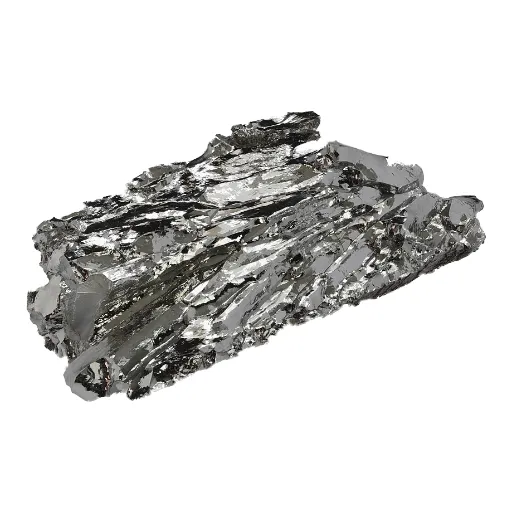
Aerospace Industry
The aerospace industry searches for the strongest metals from the earth to fulfill its stringent demands with regard to durability, lightness, and resistance against very harsh working conditions. It is these metals that ensure the safety, fading of things into history, and the continued existence of aircraft, spaceships, and their related components.
✈️ Titanium Alloys
Titanium alloys have been found suitable for use in aerospace applications by virtue of their high strength-to-weight ratios, corrosion resistance, and high-temperature resistance. Using these alloys, a variety of jet engine and airframe parts are produced as well as landing gear. It is capable of withstanding temperatures of up to 1,100°F (593°C), making it usable for parts that are exposed to intense heat.
✈️ Aluminum Alloys
Being lightweight and yet strong, aluminum alloys find applications in the construction of fuselages and wings. The 7075-T6 type of alloy developed to offer better strength and resistance against fatigue stress will ensure that an aircraft performs well under constant pressure.
✈️ Nickel-based Superalloys
These superalloys, with Inconel 718 as a member, are very important for turbine engines because of their exceptional resistance to high temperature and oxidation. A nickel-based superalloy can work in a place where the temperature is over 1,800°F (982°C) and so is very much critical for the efficiency and reliability of the engine.
✈️ Steel Alloys
Although they are heavier than titanium, advanced steel alloys are used in the aerospace field for structural components that require very high strength and very high toughness. These are used extensively in rocket motor casings and landing gear applications because of its high yield strength and fracture toughness.
✈️ Carbon Fiber Reinforced Metals
The mixture of metals and carbon fiber results in composite materials that provide far better durability and weight savings. These are used in the design of advanced aircraft, especially over areas of high stress that include turbine blades and fin structures.
With the incorporation of these advanced metals, the aerospace industry continues to exploit engineering boundaries and enables new opportunities for flight capabilities, efficiencies, and safety considerations.
Construction and Infrastructure
The advanced metals are crucial in changing construction and infrastructure industries by enhancing the strength, durability, and sustainability of present-day structures. Engineers and architects use these metals to push forward designs that may withstand extreme environmental conditions while remaining low on overall costs and environmental footprint. Five important metals that are used in construction and infrastructure include:
🏗️ High-Strength Steel
This steel has excellent load-bearing ability and resistance to stress and is highly used in skyscraper and bridge construction, as well as in tunnels. The high durability of high-strength steel ensures that infrastructure lasts without heavily requiring maintenance.
🏗️ Aluminum Alloys
Lighter than steel and corrosion-resistant, aluminum alloys are largely used in roofing, cladding, and manufacture of window frames. Since they are moldable and environmentally friendly, they are widely preferred in green building applications.
🏗️ Titanium
Titanium and its incredible strength-to-weight ratio and corrosion resistance find usage in peculiar construction situations, including offshore platforms and primary structural components in earthquake-prone regions.
🏗️ Copper
Copper is most often used for plumbing, electrical systems, and roofing by virtue of conductivity, antibacterial properties, and corrosion resistance. Also, copper can be recycled, making it very sustainable.
🏗️ Weathering Steel (Corten Steel)
The material produces a protective rust appearance which obviates the need for painting while preserving its structural integrity. Its use in bridges, facades, and outdoor sculptures is an experience in aesthetics and function.
By introducing advanced materials in construction and infrastructure, they will surely be strengthened in terms of resilience and efficiency and will contribute to sustainable development in both urban landscapes and rural environments.
Medical Uses and Innovations
The healthcare field has been reshaped by advanced materials medicine with the aim of innovation and support for patient treatment. Some significant applications are illustrated below:
🏥 Biocompatible Implants
These types of implants are made from materials such as titanium alloys or bioceramics that are compatible with human tissues. They are being applied in joint replacement, dental implants, or reconstructive surgeries—the purpose for durability and least rejection.
💊 Drug Delivery Systems
With this technology, nanomaterials and biodegradable polymers serve drug delivery systems in ensuring that the medicinal agent goes exactly to that target with minimal side effects. This method is now acting against therapies for some types of cancerous diseases by enabling precision therapy.
⌚ Wearable Medical Devices
These sleek wearable devices allow for the measurement of vital signs like heart rate and glucose levels through flexible and lightweight materials such as advanced polymers and conductive textiles. The availability of such devices ensures earlier diagnosis and increased chance for preventive care.
🫀 Artificial Organs
Modern biomaterials are of utmost importance when it comes to artificial organs like synthetic hearts and kidneys. The materials mimic the natural functions of organ tissues and are safe and effective in the long-term implantation within patients.
🩹 Wound Healing Materials
Hydrogel-based materials and bioengineered skin substitutes have been developed to hasten healing and ward off infection in wounds. They have been largely implemented in treating burn cases and chronic wounds, like diabetic ulcers, with great success.
From these new materials into medical uses, we can further see technology really altering patient care and opening new doors for treatment and recovery.
Conclusion: The Future of Strong Metals
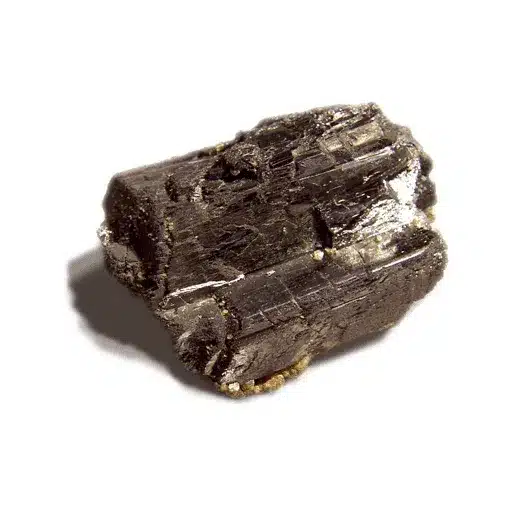
Emerging Materials and Alloys
Emerging materials and newly developed alloys are providing progress for industries, ranging from aerospace to biomedical engineering. Steel-like alloys are being synthetically developed, for aluminum-titanium types, for instance, to give them lightness and a high strength-to-weight ratio—great properties for bearings that serve in aircraft and spacecraft. High-entropy alloys attract attention for an equally unusual atomic-scale structure and mechanical properties, including corrosion resistance and thermal stability.
Besides, new breakthroughs in nanotechnology have enabled the fabrication of nanoengineered metals with improved qualities of lifetime and elasticity for applications in the construction and energy sectors. Shape memory alloys, such as nickel-titanium, are revolutionizing medicine as they regain their previously programmed shapes, crucial for stents and surgical instruments.
🔬 The Path Forward
These advanced materials are formed as a result of interdisciplinary interaction among metallurgy, materials science, and computational modeling. The developing alloy technology marks a major step toward a more efficient and safer future in multiple domains—as the demand for sustainable and high-performance solutions increases.
Environmental Considerations
In developing and applying advanced alloys, an environmental mindset should be considered for sustainability. An important factor to consider is that these materials are very energy-intensive to produce, with mining and refining of rare or nonrenewable elements. Such processes can cause serious carbon emissions and environment degradation when improperly managed. From generation of electric power in factories by renewable sources to recycling metal wastes, a number of strategies can be implemented to lessen the environmental burden caused by this industry.
An equally pressing concern now is the life cycle of these alloys. Although such materials are engineered for some form of durability and superior performance, it is equally imperative to understand their environmental impact throughout their life span. For instance, an alloy designed for high-performance aerospace or energy-related application must be developed in view of recyclability at end of life. For this, closed-loop recycling and reclamation of materials must be put in place to retrieve the resources efficiently so as to minimize further extraction of raw material.
♻️ Green Alloys: The Future of Sustainability
Research intent in the field is increasingly directed toward the development of so-called ‘green alloys,’ i.e., materials that exhibit great performance yet are environmentally friendly. A green alloy would thus contain less toxic components, easy to recycle, and entail less waste disposal from manufacturing processes. Computational modeling sees to it that optimization is pursued along the lines of alloy composition with a relatively smaller environmental footprint. Handling these issues correlates indeed with the ongoing transition toward sustainable material science practices, being another balance between innovation and environmental stewardship.
Frequently Asked Questions (FAQ)
❓ Which metal is the strongest one in the world?
Considered to be the strongest metal ever, tungsten is recognized for its incredible strength and density. Being a natural metal, it has the highest tensile strength of them all, giving it excellent durability and being impermeable to distortion. Because of this awesome force, it is employed in several places—from the aerospace sector to industrial machinery.
❓ How does tungsten compare to other metals?
Tungsten is one of the hardest metals and is stronger than titanium. On the hardness scale, tungsten goes to the top, with titanium and steel also being relatively hard but not being able to withstand yield and tensile strengths of tungsten. Hence tungsten must be used in those instances in which strength and durability are required on a high level.
❓ What characterizes the hardest metals on earth?
Most of the hardest substances on earth, the likes of tungsten and chromium, have extraordinarily high yield strength and tensile strength. They are usually brittle and this property circumscribes their applications in some environments. When joined or alloyed with certain other metals, stronger alloys can be formed that resist impact yet do not shatter.
❓ What is the role played by carbon steel in relation to metal strength?
Carbon steel is a type of metal which stands strong and versatile. It is usually combined with other metals to give stronger alloys. Carbon steel varies in strength depending on its composition, the higher the carbon, the harder, and stronger. Because of this reason, it is most used in building and manufacturing.
❓ Are there metals that occur naturally and are considered strong?
Yes, tungsten and titanium are considered naturally strong metals. Each has unique properties that make them suitable for use in aerospace, military, and manufacturing applications. Their strength denotes a capacity to support heavy loads and resist deformation in respect to mechanical forces applied.
❓ Give an example of a corrosion-resistant metal.
Titanium is an excellent example of corrosion resistance. Titanium is alloyed with other metals to improve both its strength and corrosion resistance. This property makes titanium alloys particularly attractive for marine applications in an environment susceptible to corrosive chemicals and moisture.
❓ How do powder metals help in improving the strength of alloys?
Various processes involving metal powders can be employed to create stronger alloys. The mixture of metals in powdered form allows the manufacturer to impart specific properties to the end material in terms of strength, ductility, and other characteristics. Hence, metal powders are used where materials of enhanced performance are desired beyond that offered by traditional metal forms.
❓ What is the importance of yield strength in metals?
Yield strength is that value measured in units of stress that a metal can withstand before being deformed permanently. It plays an important role in the determination of whether a metal would be used in certain applications. Metals with high yield strength, such as tungsten and some steel alloys, have found important incorporation in areas where structure integrity is of essence.
❓ Which metal can one call the strongest metal on Earth?
Tungsten is hailed as the strongest natural metal, but even so, new materials are still being devised that may eclipse it in strength. For instance, materials like carbon nanotubes and graphene are being considered for making alloys with even greater strength, and their uses span many high-tech fields.
🔑 Key Takeaways
- Tungsten holds the highest tensile strength among pure metals at 1510 MPa
- Titanium offers the best strength-to-weight ratio, ideal for aerospace and medical applications
- Chromium provides exceptional hardness and corrosion resistance at 8.5 on the Mohs scale
- Steel alloys remain versatile and recyclable, widely used in construction and automotive industries
- Future developments focus on green alloys, self-healing coatings, and sustainable material science
📚 References
- Tungsten: The Strongest Natural Metal on Earth
Academic source discussing tungsten’s exceptional tensile strength and ability to withstand extreme conditions. - Say Hello to the Toughest Material on Earth – Berkeley Lab
Berkeley Lab article exploring a metallic alloy made of chromium, cobalt, and nickel, which has recorded the highest toughness among materials. - Graphene is Strong, But Is It Tough? – Berkeley Lab
Article examining graphene, a material 200 times stronger than steel, and its properties as one of the strongest known materials. - Click here to read more.
🚀 Final Thoughts
The exploration of the strongest metals on Earth reveals not only the remarkable capabilities of these materials but also humanity’s ingenuity in harnessing their properties for innovation. As we continue to push the boundaries of material science, the future promises even more extraordinary developments in metallurgy, sustainable practices, and cutting-edge applications across all industries.

